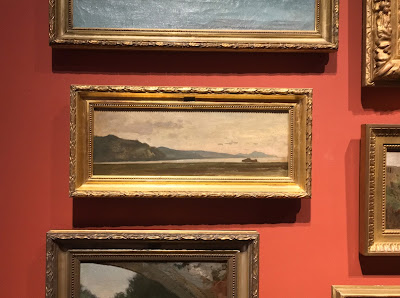Happy New Year! I could not resist the title of this post, since the New Year is the time we all make resolutions, and vow to turn over a new leaf in certain areas. But the "new leaf" I am writing about is a quite literal one: I've been painting a new plant lately, and one whose leaves are most compelling.
I waited eagerly all fall for the cyclamen to arrive in garden shops. The cyclamen is a cold weather plant, so the plants don't come in until after that first cold snap. They often show up after Thanksgiving, and they are beautiful for Christmas decor. The white ones are my favorites, because I love to paint white things. They always show us that "white" is not actually white. In fact, white can be almost any color, depending on the light and the surrounding objects.
 |
| Detail from a recent painting (c) Lesley Powell 2017 |
I love the cyclamen flowers--some writers have described them as looking like shooting stars. I find that, although they all have an "upswept" look in common, they often take different shapes. Some of them remind me of badminton shuttlecocks. Others remind me of the Flying Nun (that shows my age--Sally Field fans unite!). Still others look like a windswept figurehead on a ship. (That's how I saw the one of the left, just above). No matter their particular configuration, the flowers are elegant and sculptural. Not unlike the orchids I love to paint.
 |
| "Cyclamen II" 12 x 9, Oil on Canvas (c) Lesley Powell 2017 |
The cyclamen leaves are also a noteworthy feature of the plant--and very intimidating to paint. Gardener's Supply says that the leaves are "embroidered with intricate, silver patterns." And there are certainly lots of them! I challenged myself to simplify both the leaves and the flowers of the cyclamen. I kept in mind the words of that great painter of flowers, Georgia O'Keefe. O'Keefe said: "Nothing is less real than realism...details are confusing...it is only be selection, by elimination, by emphasis that we get at the real meaning of things."
Well, I would not compare myself to Georgia O'Keefe, but I do share her philosophy of simplification. You can let me know how well I did in avoiding confusing details and capturing the real personality of the cyclamen. Check out the images of the finished paintings here. Thanks for looking!
 |
| This one's still on the easel... |















































